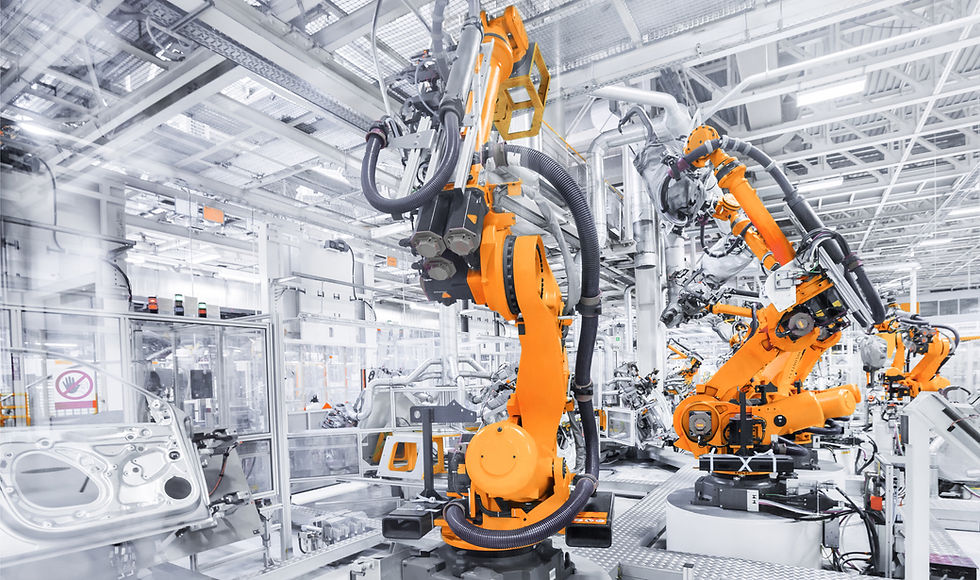The Right Pick and Place Robot for Your Operations
- Techam Solutions

- Feb 4, 2023
- 3 min read
Pick and place robotic applications could create quick wins by streamlining operations, reducing quality issues, producing tangible financial impact, and reducing safety risks. It is important to know the basics of pick and place robots as well as the impact of it on your production before adapting it into your operations. In this article, we list some of the major benefits from the operations point of view. We also describe some of the parameters that are important to consider before committing to a robotic solution.

What Are Pick and Place Robots?
Pick and place robots are the robotic applications that a robot picks a part at one location and place it at another. These robots could pick from pre-defined locations and place at pre-defined destinations. In many cases, these robots utilize advanced 2D or 3D vision systems to be more versatile in picking and/or placing function.
What Are the Benefits of Pick and Place Robots?
Using the right pick and place robotic solution for a manual application could have significant benefits.
Throughput - The most obvious benefit of deploying a pick and place robot is achieving higher throughputs. These robots can be significantly faster than operators. They can also work 24/7 lights out if needed.
Quality - Robots are extremely consistent in what they are programmed to do. This consistency could result in reduced quality issues. The quality impact is easier to appreciate when the product that is handled is sensitive to mishandling and misplacing.
Cost - If planned properly, pick and place robots could pay for themselves very quickly and reduce total cost of production on an ongoing basis.
Safety - In some cases such as handling chemicals, it is obvious that using these robots reduces safety risks for employees. But for almost any pick and place application, there are safety benefits. Even for handling very light components, performing repetitive motion tasks over a long time is harmful to human and it comes at a cost. Utilizing pick and place robots eliminates those risks.
How to Select the Right Pick and Place Robot?
Pick and place robots are a small part of a manufacturing value stream. It is important to perform a full analysis of the stream that the robot will be a part of to establish the requirements and objectives for the robot. The following four parameters are the main factors that affect the selection of the appropriate solution.
Speed - From the operations point of view, this is the most important parameter. A time study of the value stream should create the cycle time for each operation. It is important to establish the current takt time and plan to meet it as desired cycle time. Knowing how long it currently takes to do a pick and place operation and try to match or beat it is not a good approach. A good analysis will take the bottlenecks as well as forecasted takt in future into account. It is also critical to factor in a realistic overall equipment effectiveness (OEE) for the system.
Work Volume - Depending on the application, this might be an obvious step in establishing the requirements. The robot needs to be able to meet the position and orientation requirements at pick and place locations.
Payload - This is another critical parameter in selecting the robot type and size. It is important to note that this includes the weight of the part that is handled as well as the End of Arm Tool (EOAT) and anything else the robot might need to carry.
Repeatability - The required accuracy in performing the tasks is also a major parameter in selecting the right solution.
Some other requirements and constraints that might affect selecting the right solution include factory environment, available space, number of axes, support requirements, lead time and availability.
Takeaway
Pick and place robots are typically a small part of the value stream in a manufacturing environment. It is critical to understand the operations upstream and downstream and establish a clear set of requirements and objectives before committing to a specific solution. If this step is not done properly, the deployed pick and place robot will become yet another constraint that must be considered when trying to come up with a holistic solution for undesired outcomes.
About Techam: Techam Solutions is an operations and engineering consulting firm working with small to medium-sized manufacturers, private equity firms and their portfolio companies across multiple industries. We provide a wide range of operations management and engineering services to drive operational excellence and implement solutions that deliver reduced cost, increased performance, and enhance the company’s bottom line. We aspire to be a trusted advisor and a reliable partner who brings meaningful and sustainable value to our clients. For more information, call 316.768.1856 or email info@techamsolutions.com.



